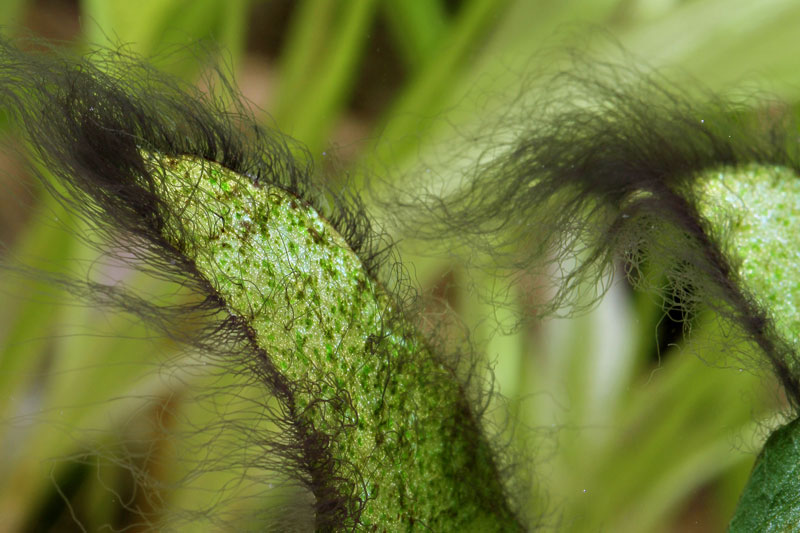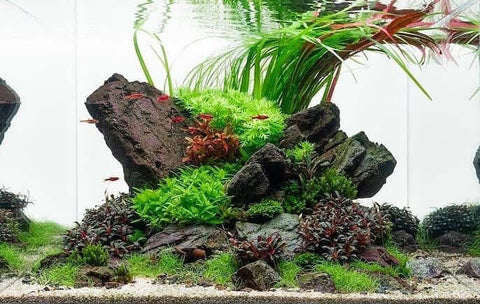In this blog we discuss every facet of controlling algae in aquariums, from prevention to types of algae to methods for elimination. Additionally, we offer advice on how to properly maintain your tank so that pesky algae won't keep appearing. This blog is great whether you're an amateur or a seasoned aquarist; it'll definitely help you in making sure your aquarium remains pristine and healthy.
Understanding Algae & Its Role in Aquarium Care
Identifying the type of algae present in an aquarium is a crucial first step when dealing with it. There are several common types, from green water to brown diatoms and red slime to black beard/brush algae. Nutrient levels must be managed as excess nitrates and phosphates can cause rapid algal growth which can overtake a tank without proper maintenance methods such as filtration systems or regular cleaning regimes. Lighting also plays an important role - too much light may lead to excessive photosynthesis rates, resulting in increased chlorophyll production and visible blooms throughout the tank environment depending on species present. Reducing lighting hours during peak periods might help slow down this process but should only be done after consulting a professional so that mistakes don't cause more harm than good due to inexperience!
Different Types of Algae and How to Identify Them
Algae is a vital organism in any aquarium and its presence can either be beneficial or detrimental depending on the type. It is essential to recognize various kinds of algae so you are able to manage them accordingly for keeping your tank healthy.
A prime example of algae is filamentous, which appears as green strands that form clumps or mats and resemble tufts of hair. These spread quickly but can be easily removed by hand since they do not attach firmly onto surfaces like some other types do.

Staghorn, or branchy algae, also grows rapidly when there are high levels of nutrients present, yet it can be cleaned off hard surfaces using a brush or toothbrush from rocks or decorations inside the tank.

Cyanobacteria may appear in tanks with inadequate water quality that has too many nutrients for it to survive without assistance from fish waste and leftover food particles after feedings; this will normally create a slimy layer across all surfaces which requires diligence when removing but can be prevented through regular water changes alongside proper filtration maintenance for your set-up.

Diatoms consist of single celled organisms with silica shells shaped like tiny boxes providing them their characteristic yellowish-brown coloration when combined into colonies along substrate surfaces such as glass walls and decorations within the tank; if kept under control these won't cause harm however an excessive amount could keep light from penetrating due to thick growth leading to poor plant growth due lack of exposure needed for photosynthesis reactions among those plants.

Dinoflagellates (species made up single celled organisms ranging from 1-2 microns (1/1000th mm)in size being so small they cannot been seen by eye) only occur when nutrient levels become extremely high because too much feeding , overstocking , poor filtration maintenance etc...and should always been treated immediately before it gets out control otherwise it may become very difficult get back down again without taking extreme measures upon your entire system itself. You might detect their existence by looking at cloudy patches floating around your aquarium caused by movement within these minuscule creatures.
Best Practices for Controlling & Removing Algae from Your Aquarium
Maintaining a healthy and clean aquarium is important to keep algae in check. When left unchecked, algae can cause poor water quality, unpleasant visuals, and even endanger the fish inhabiting it. Fortunately, there are several methods that hobbyists can use to prevent unwanted algal growth without resorting to harsh chemicals or specialized treatments.
1- Monitoring pH levels of the tank must be regular; both extremely low and high readings can lead to an increase in algae growth. Additionally, replacing old water regularly prevents toxins from amassing which could also promote algal bloom.
2- The lighting setup inside the tank should also be considered when trying to control existing algal populations; too much light encourages photosynthesis but also provides more nutrients for existing microorganisms while not enough light restricts photosynthesis but limits competition for resources resulting in more nutrients available for existing algae colonies. In order to achieve ideal conditions you should adjust lighting times based on what plants and fish live within your aquarium - this way everyone has adequate exposure without leading to excessive algal bloom all at once!
3- Manual removal is often necessary when dealing with nuisance species - carefully pluck out any visible patches of them with tweezers or other tools before they spread further into other parts of your ecosystem as doing so will help maintain their numbers until better environmental conditions are established!
Prevention Tips to Avoid Future Algae Growth
Monitoring the water chemistry of your aquarium is key to preventing algae outbreaks. Test for ammonia, nitrite, nitrate and pH levels at least once per week to avoid any issues arising. When filling up the tank use filtered or treated tap water as a precaution against introducing contaminants that can cause excessive algal growth over time.
Make sure you're providing adequate lighting; too much will lead to an abundance of photosynthesis from both plants and unwanted algae while not enough will prevent plant life from competing with bacteria for resources in the environment. Additionally, perform regular maintenance tasks like changing 25-30% of the tank volume each week and cleaning surfaces regularly using products made specifically for fish tanks - this way you can control organic matter buildup which could otherwise act as food sources for growing colonies of microscopic organisms including those responsible for causing dreaded algal blooms!
Introducing some herbivorous species such as snails or shrimp into your tank helps provide natural grazing services which keep these organisms under control without having resorting chemicals or treatments that may harm other inhabitants living inside.
The Benefits of Having a Healthy Aquarium with Low Algae Concentrations
Maintaining low algae concentrations in an aquarium is essential for the health of its inhabitants and functioning of equipment. Regular maintenance is key; this includes monitoring pH levels, filtering water as needed, providing adequate light, and feeding fish only what they need. Having reduced amounts of algal growth will help ensure that machinery stays free from damage caused by certain species like green spot or hair algaes. Low levels of algae also helps maintain good water quality which prevents oxygen deprivation due to overgrowth and keeps fish healthy through proper nutrition. To avoid further complications down the line, it's important to monitor often enough so any changes can be addressed quickly with daily care being given towards them accordingly.

Conclusion
In conclusion, looking after your aquarium by controlling algae growth is essential. If aquarium owners are not careful, algae can become a major issue. Nonetheless, with suitable tank maintenance and prevention techniques, it is possible to keep the growth of algae under control. Prevention, eradication and control should all be taken into account to preserve the tank's cleanliness and healthiness.
